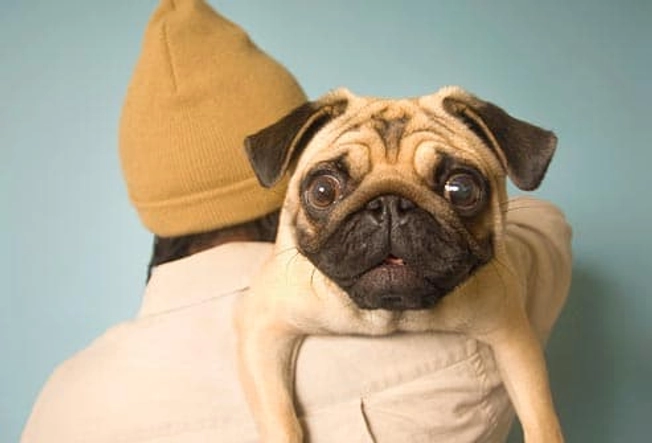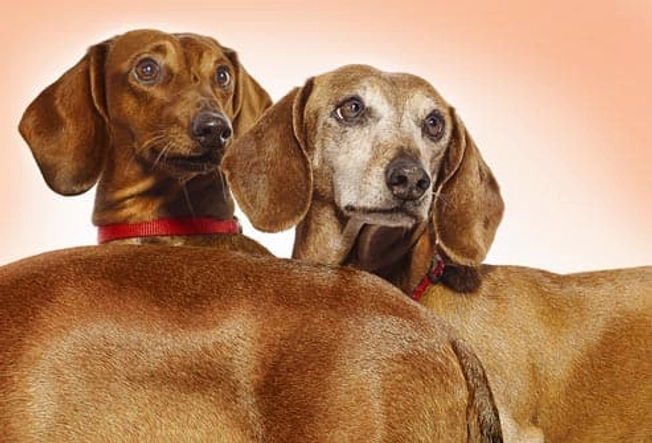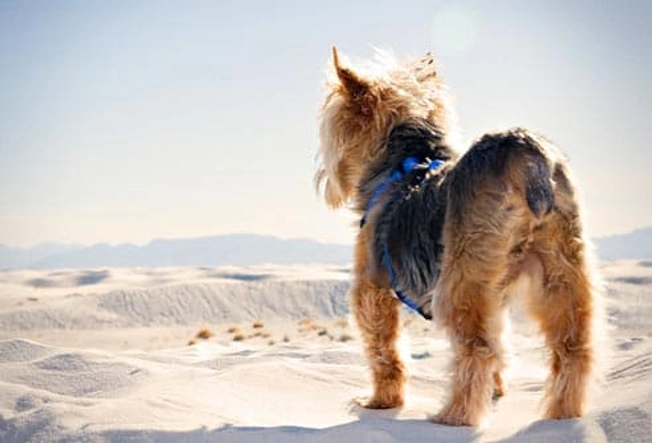
- Diet & Nutrition
- Behavior & Training
- Puppy Care
- Preventive Care
- Common Conditions
- View Full Guide
Slideshow: 25 Most Popular Dog Breeds and Their Health Issues


Siberian Husky: Autoimmune Disorders
Siberian Huskies seem to be predisposed to a variety of autoimmune disorders, many of which affect the skin. These conditions cause sores and hair loss, often on the face. One immune condition affects both the skin and the eyes and can lead to eye problems like glaucoma and cataracts. Typical treatment for these disorders is corticosteroids to inhibit the immune system. Sometimes, the vet may use an immunosuppressant such as cyclosporine.

Bulldog: Respiratory Problems
Like all dogs with those adorable smashed-in faces, bulldogs can suffer from breathing problems. Your bulldog's small nostrils, elongated soft palate, and narrow trachea are the reasons why they probably snore, and they can lead to a life-threatening emergency if they get overheated or overtired. That's why it's important to keep bulldogs cool in the summer and never overdo it with exercise.

Pug: Eye Problems
With their squashed faces and bulgy eyes, pugs are at risk for eye problems. The most serious is an eye popping out of its socket. This can happen if a pug gets into an accident or a fight with another dog. If this happens, cover the eye with a damp cloth and rush your dog to the vet. The vet may be able to put the eye back in place, although whether the dog will retain vision in the eye depends on the severity of the damage.

German Shepherd: Hip Dysplasia
Many large breeds are prone to hip dysplasia. In hip dysplasia, the joint's ball and socket don't fit together properly, which causes pain, arthritis, and problems walking. When looking for a German shepherd puppy, ask the breeder whether the parents have been screened for hip dysplasia. Parents with healthy hips are more likely to produce puppies with healthy hips.

Labrador Retriever: Obesity
Any dog can become overweight, but labs are especially prone to it. And just like with people, obesity is linked to health problems in dogs. Labs need vigorous daily exercise. If your lab is constantly begging for more food, try giving them raw carrots, green beans, or apples to snack on. Since prevention is easier than weight loss, it's best to consult with your vet on a diet plan that's right for your pet.

Beagle: Epilepsy
Epilepsy, a brain disorder that causes seizures, seems to be more common in beagles than in other dog breeds. Epileptic dogs will usually have their first seizure between 6 months and 3 years old. Though epilepsy can't be cured, frequent seizures (more than one a month) can usually be managed with antiseizure medication.

Shih Tzu: Wobbly Kneecaps
Wobbly kneecaps, or patellar luxation, are extremely common in toy breeds like shih tzus. In patellar luxation, the kneecap occasionally pops out of place, causing the dog to hobble, skip a step, or limp. The kneecap will usually pop back into position on its own, but in severe cases, surgery may be necessary to correct the problem and prevent arthritis.

Boxer: Cancer
Boxers are at higher risk for certain types of cancer, including lymphoma and mast cell tumors. Lymphoma is cancer of the lymph nodes and involves white blood cells known as lymphocytes. Mast cell tumors are a type of skin cancer that can have varied forms and also involve internal organs. In both cases, the cancer is often felt as an unusual lump or bump on your dog's body. Both of these cancers might be treatable, but it's important to catch them early. So if you have a boxer, be sure to check them regularly for lumps.

Dachshund: Back Problems
Because of their long bodies, dachshunds are at higher risk for back injuries and spinal disk problems. The best way to keep your dachshund feeling their best is to keep them at a healthy weight. Excess weight puts strain on the back. Also try to limit stair-climbing and jumping down from furniture, as it can also put stress on the back.

Doberman Pinscher: Heart Condition
Dilated cardiomyopathy (DCM) is a serious heart condition in which the heart's chambers are stretched out and don't pump blood effectively. Often, owners of dogs with DCM don’t even realize something is wrong until their dog collapses. Because DCM is so common in Dobermans, many vets suggest annual screenings. Medications can regulate heart rhythm and improve the heart's ability to pump, but there is no cure for DCM.

Cocker Spaniel: Ear Infections
Dogs like cocker spaniels with floppy, furry ears are prone to frequent ear infections. The best way to prevent ear infections is to clean your dog's ears every couple of weeks and occasionally flip their ears back to let them "breathe." Also carefully trim any hair growing on the underside of the ears with clippers to help keep the ear canals dry. Minimizing the frequency of ear infections may also prevent major problems down the road.

Yorkshire Terrier: Portosystemic Shunt
Portosystemic shunt (PSS) is a blood vessel birth defect that's common in small breeds like the Yorkie. The portal vein carries toxins from the intestines to the liver, which cleans the blood. With PSS, the vein bypasses the liver, and toxins aren't removed. PSS may cause poor growth, vomiting, confusion, and seizures. Most of the time, PSS can be corrected with surgery, and the dog will go on to live a normal, healthy life.

Golden Retriever: Skin Allergies
Does it seem like your golden is constantly licking? Unlike people, dogs usually don't sneeze when they're allergic to something. Instead, they tend to get itchy skin. And frequent licking, scratching, and chewing can lead to hot spots (red, oozing sores). Before starting any long term treatment at home be sure to consult with your vet first about your dog's condition and needs. To soothe itchy skin, give your dog baths with oatmeal shampoo, add an omega-3 supplement to their diet, and make sure they have regular flea treatment.

Poodle: Glaucoma
Poodles are one of a handful of breeds that are at increased risk for this serious eye disease. Glaucoma is a buildup of fluid in the eye, which causes pressure, pain, and eventually blindness. Early on, glaucoma can be treated with medications. But surgery and even removal of the affected eye may be necessary.

Rottweiler: Joint Problems
Large breeds like the Rottweiler are at risk for a variety of joint problems, including hip dysplasia, elbow dysplasia, arthritis, and osteochondrosis dissecans (OCD). OCD is a condition that develops in large, fast-growing puppies in which the cartilage in a joint doesn't form properly. Feeding the right amount of a balanced diet may help keep your Rottweiler's joints healthy. However, many dogs require surgery to remove the abnormal cartilage.

Miniature Schnauzer: Diabetes
Has your miniature schnauzer been drinking water like they have just run a marathon? Are they suddenly having accidents in the house? They could have diabetes. Any dog can develop diabetes, but miniature schnauzers seem to be at higher risk. Diabetes is a serious condition, but with the insulin and diet changes your dog can live a normal, healthy life.

Chihuahua: Collapsing Trachea
Does your Chihuahua make a honking noise when they get excited? They may have a collapsing trachea -- a common problem in toy breeds. With collapsing trachea, the cartilage that normally holds the trachea open is weak, so the trachea flattens. Some dogs go their whole lives with collapsing trachea and have no problems from it; others require medication. In severe cases, surgery may be necessary to prop the trachea open.

Pomeranian: Hair Loss
Pomeranians are predisposed to an adrenal gland disease called alopecia X, which causes hair loss. Alopecia X usually begins when a dog is young. If a dog with alopecia X is intact, spaying or neutering often causes the hair to grow back (the hair loss is caused by excess production of sex hormones). Melatonin supplements can also help.

German Shorthaired Pointer: Aortic Stenosis
Aortic stenosis is a narrowing of the aorta, the large blood vessel that carries oxygen-rich blood from the heart to the body. Aortic stenosis puts strain on the heart and over time might cause an irregular heart rhythm. When aortic stenosis is mild, there may be no symptoms. In more severe cases, the dog may be weak and tire easily. Unfortunately, aortic stenosis usually shortens a dog's lifespan, but it can be managed with medications. The most common breeds are Newfoundlands, Golden Retrievers and Rotties.

Great Dane: Bloat
Giant breeds like Great Danes are at higher risk for gastric dilation and volvulus (GDV). This is a life-threatening condition that develops when the stomach fills up with gas and then twists, trapping food and gas in the stomach. If the abdomen looks distended, and if you notice your dog pacing, panting, and drooling excessively right after eating, call the vet right away. GDV can be corrected with surgery, but it can be fatal if not treated quickly.

Shetland Sheepdog: Collie Eye
Shelties can be affected by a group of related eye problems known as "collie eye anomaly." Collie eye affects the retina and the optic nerve. Mild cases may not affect the dog's vision at all, but moderate to severe cases can lead to blindness. There is no treatment for collie eye, and it's fairly widespread among the breeds that are affected by it. So before you bring a Sheltie puppy home, ask if they are been tested.

Maltese: Little White Shaker Syndrome
This funny-named condition is just what it sounds like: tremors in small dogs that are white (although dogs with other coat colors can get it, too). It's caused by inflammation in the cerebellum, which causes shaking that can be so bad the dog can barely walk. But the good news is that it's treatable with corticosteroids, it's not painful for the dog, and it usually subsides after a few weeks.

Boston Terrier: Cherry Eye
Because of their protruding eyes, Boston Terriers are susceptible to a number of eye problems, including cherry eye. In cherry eye, a tear-producing gland "pops out" from behind the dog's third eyelid. It's called cherry eye because the gland is round and bright red. Cherry eye can be repaired with surgery. Besides cherry eye, Boston Terriers are also at risk for dry eye and cataracts.

French Bulldog: Breathing Problems
Like their English cousin, the French bulldog is susceptible to breathing problems. Also known as brachycephalic airway syndrome, this set of breathing problems is a result of the breed's pushed-in nose, elongated soft palate, and narrow trachea. Extreme heat or too much exercise can cause a French bulldog to struggle to breathe, so it's best to keep them indoors on hot days.

Cavalier King Charles Spaniel: Mitral Valve Disease
This heart problem is common in elderly small dogs, but cavaliers often develop it early on. In mitral valve disease, the valve between the left atrium and ventricle doesn't close tightly, allowing blood to leak backward when the heart pumps. This puts strain on the heart. Symptoms include lethargy and coughing. With monitoring and the right medication, a dog with mitral valve disease can live for years with very few symptoms.

How to Pick a Healthy Purebred Pup
Do your research. Find out what health problems are common in the breed you’re interested in. Then, find a reputable breeder by asking for recommendations from friends or through a local breed club or rescue group. Once you've decided on a puppy, find out about the health of the parents, and make sure the puppy has been screened for breed-related health problems.
Images provided by:
1) Tim Flach/Stone+
2) Scott Ice/Flickr
3) Laura Ciapponi/Photonica
4) Andreas Koerner/Stock4B
5) Gerard Brown/Dorling Kindersley
6) David Bitters / Index Stock Imagery
7) Andrew Fladeboe/Flickr
8) James F. Dean/Workbook Stock
9) Gandee Vasan/Stone
10) Tim Flach/Stone+
11) Stephanie Adams/Age footstock
12) Laura Natividad/Flickr
13) Brenna Percy/Flickr
14) Julie McInnes/Flickr
15) Chad Coombs/First Light
16) Ugopapa/Flickr
17) Image Source
18) Ted Russell/Photographer’s Choice
19) Jo Bradford/Flickr Select
20) Stockbrokerxtra Images
21) Imagestate RF
22) Hideki Yoshihara/Aflo Foto Agency
23) Lite Productions
24) Beniot Bernard/Flickr
25) Martin Rogers/Workbook Stock
26) GK and Vikki Hart/Taxi
References:
Brevitz, B. The Complete Healthy Dog Handbook, Workman, 2009.